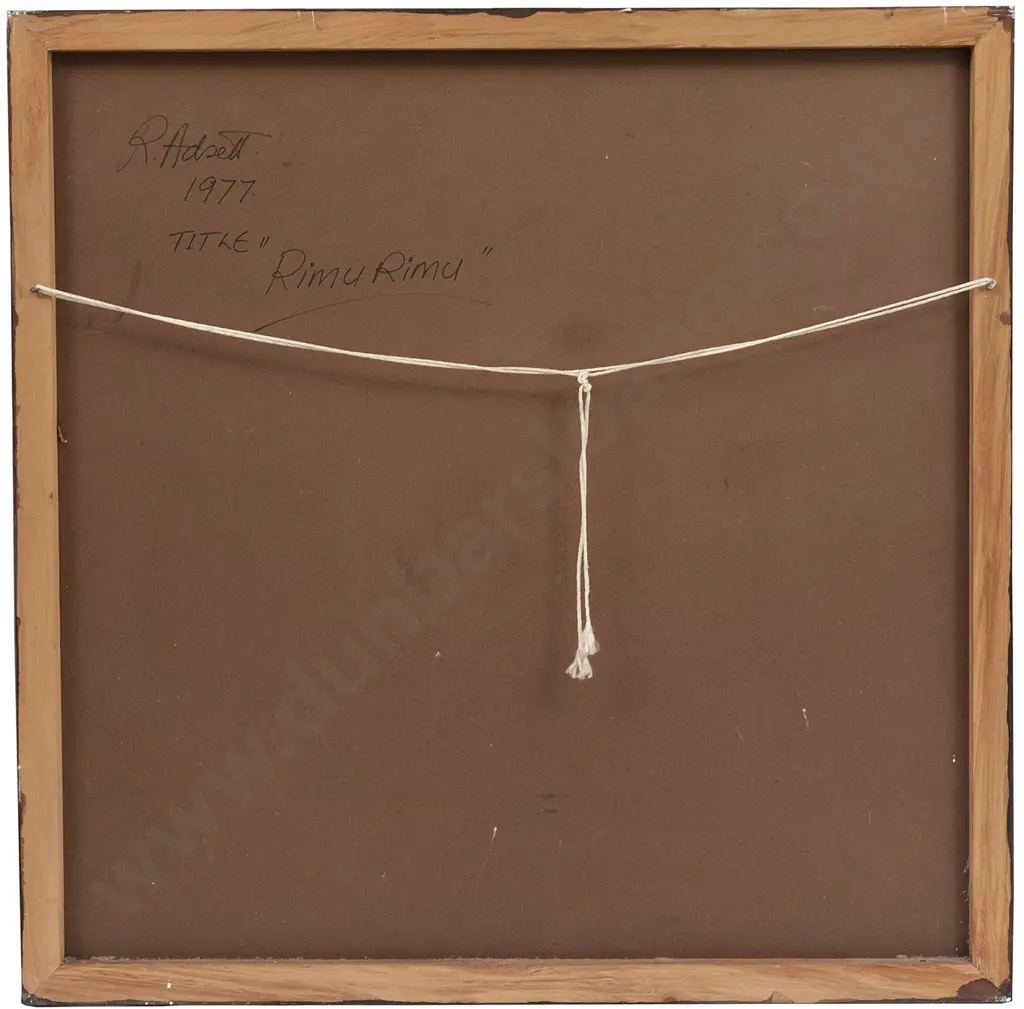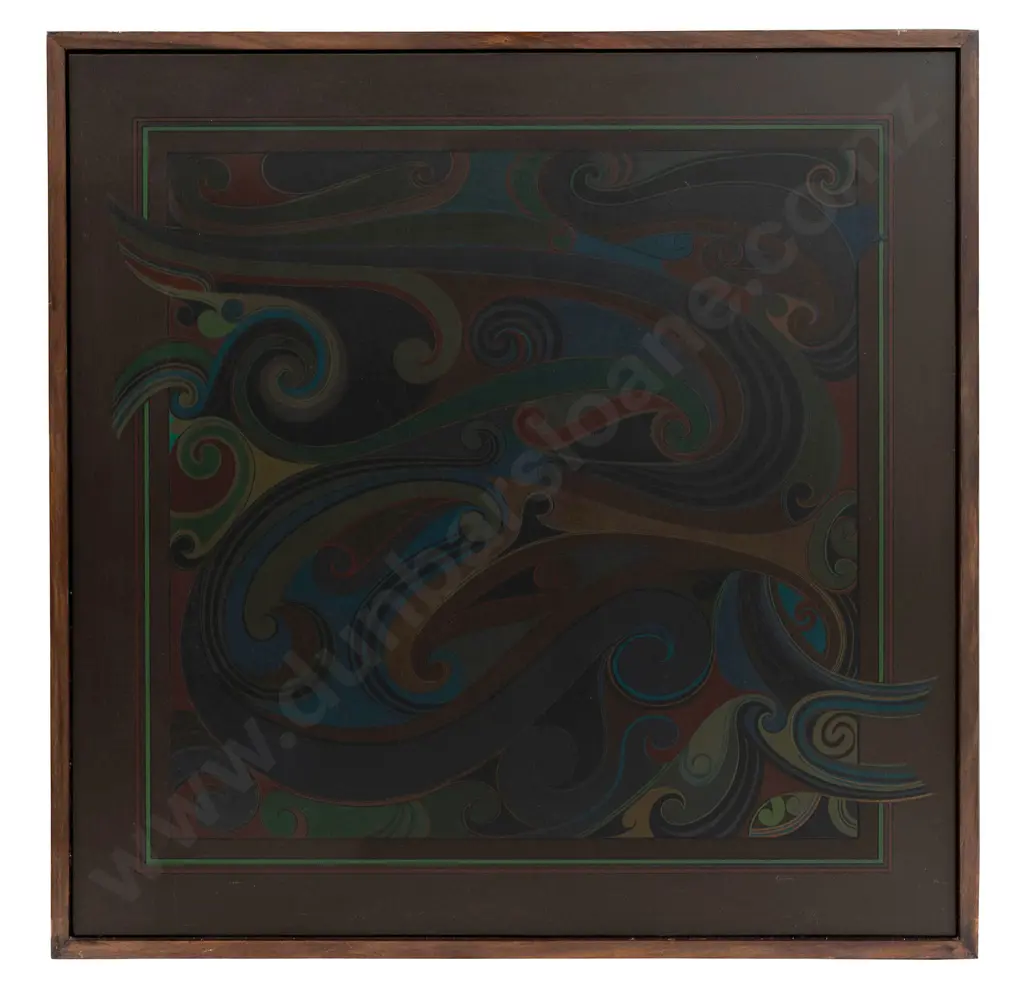NZ & International Fine Art Wednesday, 22 March 2023 / 6:00 pm start
Sandy Adsett (b.1939) - Rimu Rimu
Lot Details
Sandy Adsett (b.1939) Rimu Rimu acrylic on board signed R. Adsett, title inscribed and dated 1977 (on reverse) 92 x 92cm Dr Sandy Adsett is a champion of Māori art histories and practices within Aotearoa – he has been described as the grandmaster of contemporary Māori art and one of the most significant and respected Māori artists of his generation. In spite of these accolades Adsett is a humble practitioner, preferring to celebrate and elevate the work of other artists in the Māori art scene. Adsett is also a generous teacher, facilitating education for the next generation and encouraging his students through large cooperative works. The 2011 Toi Koru exhibition at Pātaka Art+Museum was Adsett’s first major retrospective exhibition and one of only three solo exhibitions to date, despite his in-depth research into the conceptual and aesthetic significance of kōwhaiwhai for over six decades. As described by artist Elizabeth Ellis in an article for the exhibition: “His work is revered as taonga of great significance … He is nevertheless our best-kept secret, having never sought the spotlight. His work as a Māori artist and educator has always been concerned with lifting the mana and wellbeing of his community. Now, it’s our turn to acknowledge him.” (Jessica Tyson for Te Ao Māori News). Adsett’s work reengages with an art practice and history that pre-dates the arrival of Western art in New Zealand. Adsett’s interrogation and extension of traditional kōwhaiwhai is energised by his masterful understanding of colour, form and design. Rimu Rimu from 1977 is a beautiful example of these kōwhaiwhai-based compositions that the artist is best known for. Although the kōwhaiwhai patterns found in Rimu Rimu appear abstract, the forms explore the ecology of the flora and fauna of Aotearoa, representing their unique mauri. His colour choices in Rimu Rimu reveal themselves subtly as the fern fronds unfurl from the darkness. These colour choices, though not traditional, are distinctly New Zealand, found within our densest and most fertile forests. Like the artist himself, Rimu Rimu is not loud or overbearing. Its amoebic forms are sensitively coiled and contained within the central composition but also punctured left to right spilling and unfurling from outside the boarder. Kōwhaiwhai patterns have held their significance as a Māori art form for generations. Adsett’s clever use of framing and composition reveal how this art form cannot be contained by time or space and, thanks to his significant work, will continue to permeate the visual language of Aotearoa for generations.


